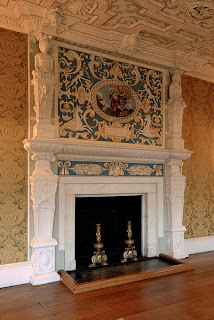-plan-free.jpg) Marissa and I are thankful for much in our lives. Our families will be close during the holidays, and we'll be taking next week off blogging to spend time with them. We each are writing and publishing books we love, and we have lots of ideas still simmering at the backs of our minds. And so many of you have dropped by to comment on this blog the last few months. Thank you for the encouragement!
Marissa and I are thankful for much in our lives. Our families will be close during the holidays, and we'll be taking next week off blogging to spend time with them. We each are writing and publishing books we love, and we have lots of ideas still simmering at the backs of our minds. And so many of you have dropped by to comment on this blog the last few months. Thank you for the encouragement!I personally am also thankful that tomorrow marks the 50th anniversary of a British classic, Dr. Who! So, in honor of the Doctor and Thanksgiving, here's an early nineteenth-century recipe from famed cook Mrs. Beeton for Baked Apple Custard (like traveling with the Doctor, I advise you to try at your own risk!).
1 pint of milk (heavy cream can be substituted for half the milk)
1/4 cup of sugar
A few drops of vanilla extract
4 eggs
1 dozen large apples
1 small teacupful of cold water
Sugar to taste
Grated rind from one lemon
Dash of nutmeg
Pour the milk into a saucepan and add the quarter cup of sugar and the vanilla.
Stir gently and heat on low until the flavors are blended.
Bring the mixture to the point of boiling, then pour it into the top of a double boiler and let it cool.
While it is cooling, whisk the eggs well and peel, cut, and core the apples.
Put the apples in another saucepan with the cold water on medium heat and bruise them to a pulp as they heat.
Sweeten them with a little sugar to taste and add the grated lemon rind.
When the milk has cooled, stir in the eggs and heat the mixture in the double boiler.
Keep stirring the custard one way until it thickens but do not let it boil.
Allow the apples to cool and put them into a pie dish.
Pour the custard over the apples and sprinkle a little nutmeg over the top.
Bake the dish at 350 degrees F from 25 to 35 minutes.
Serve while warm.
And yes, if you are a true Whovian, you will need to find some fish fingers (fish sticks) to dip in this. Of course, a true Whovian will probably sneer at the apple part, but allow me some creativity.
And speaking of creativity, do come back after Thanksgiving, when we will be launching the second book in the Master Matchmakers series, The Wife Campaign!
Happy Thanksgiving!


























.jpg)